Warren Distinguished Lecture Series

The Warren Distinguished Lecture Series is made possible by a generous, renewing gift by Alice Warren Gaarden in 1961. Since 1989, we have been bringing in accomplished researchers and speakers from around the world to share their work with students, faculty, and friends of CEGE. Please join us for these lectures!
- Join us in person in the George J. Schroepfer Conference Theater, 210 Civil Engineering Building, Fridays at 10:10 a.m., unless otherwise noted. Coffee and refreshments served.
- Join us via Zoom. Registration is required. Link information will be sent when you register.
- Recordings are available on the CEGE YouTube channel, Warren Lecture Series playlist , where you can also search past lectures.
Upcoming Events
We wrap up the spring season on April 26 with the Robert Dexter Lecture with Dimitrios Lignos, Resilient Steel Structures Laboratory, École Polytechnique Fédérale de Lausanne (EPFL), Lausanne (Switzerland). The series will resume after a summer break.
There are no upcoming events matching your criteria.
Past Warren Lectures
Critical Mechanical Structures: Topological Metamaterials and Robust Mechanisms in Messy Matter
Friday, April 12, 2019, 10:10 a.m. through Friday, April 12, 2019, 11:15 a.m.
George J. Schroepfer Conference Theater, 210 Civil Engineering Building
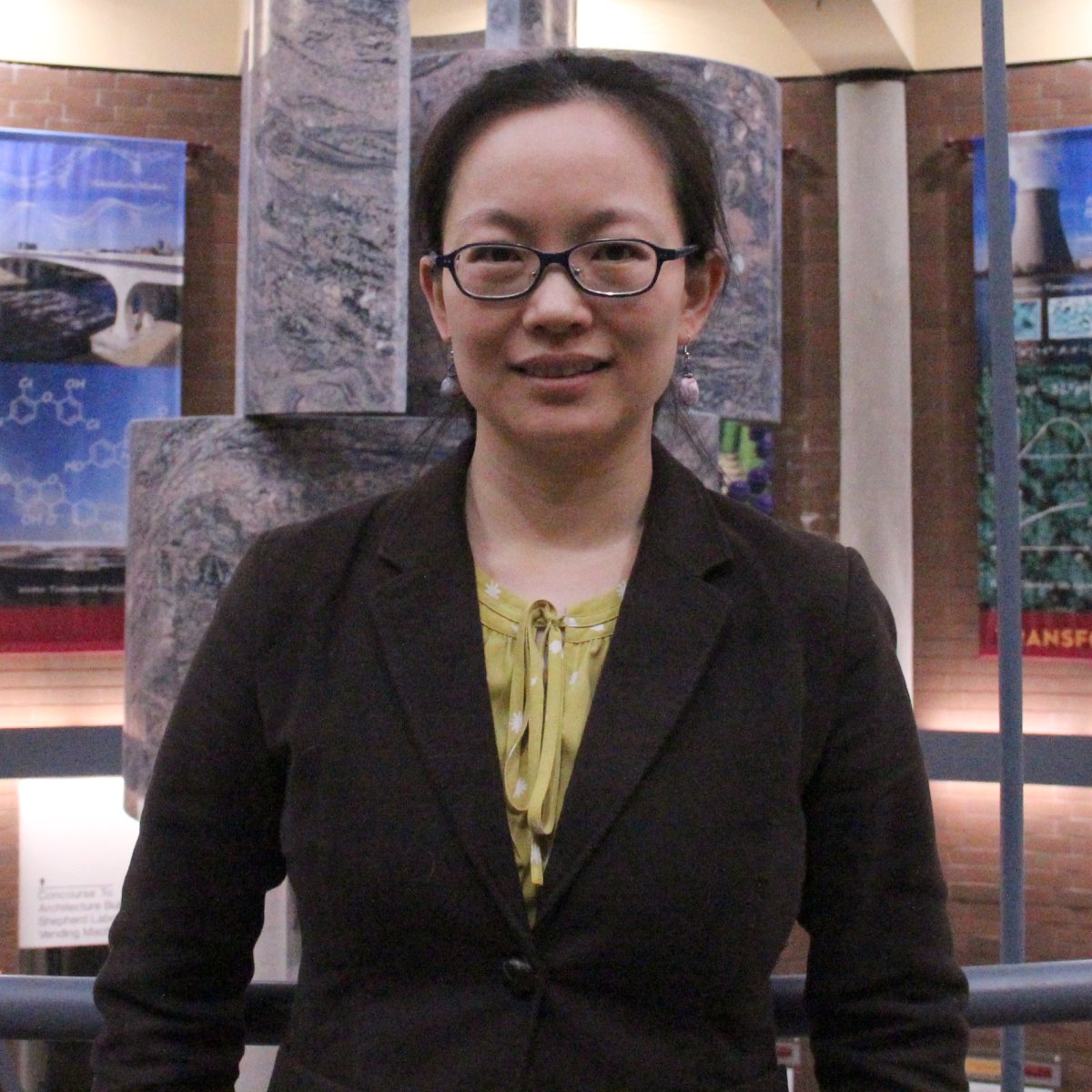
Xiaoming Mao
Physics, University of Michigan
ABSTRACT: Critical mechanical structures are structures at the verge of mechanical instability. These structures are characterized by their floppy modes, which are deformations costing little energy. On the one hand, numerous interesting phenomena in soft matter are governed by the physics of critical mechanical structures, because they capture the critical state between solid and liquid. On the other hand, the design of mechanical metamaterials (i.e., engineered materials that gain their unusual mechanical properties, such as negative Poisson's ratio, from their structures) often rely on floppy modes to realize novel properties, and the floppy modes in this situation are called "mechanisms." Mao focuses on floppy modes in critical mechanical structures that are governed by topological invariants, and are thus called "topological edge modes." Mao proposes a new design principle, for mechanical metamaterials that are transformable between states with dramatically different properties, by manipulating topological states. Because of the topological protection, these floppy modes are highly robust against disorder. Mao also discusses recent work exploring topological floppy modes in aperiodic, messy, systems, such as fiber networks and quasicrystalline tilings, which manifest the power of "topological protection," and may lead to broad applications in biology, physics, and engineering.
Note: Recording not available
Fluid Deformation of the Solid Earth: Bending and Breaking Rock and Ice
Friday, April 5, 2019, 10:10 a.m. through Friday, April 5, 2019, 11:15 a.m.
George J. Schroepfer Conference Theater, 210 Civil Engineering Building
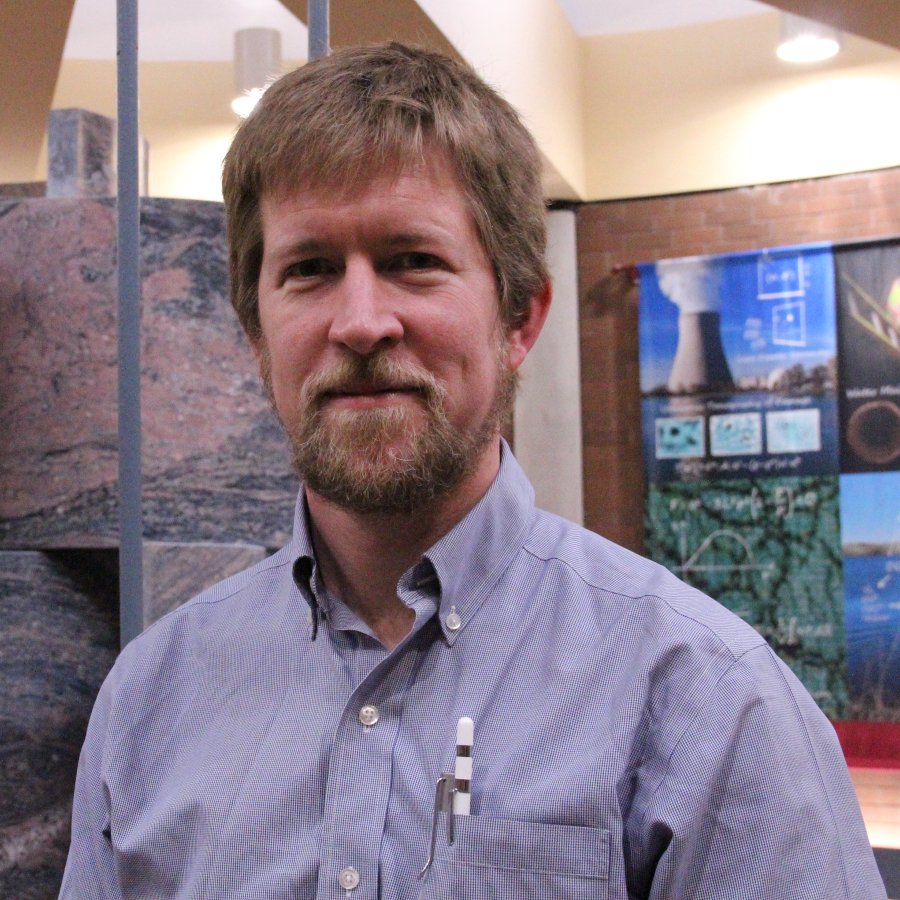
Jerome Neufeld
Earth Sciences, Applied Mathematics and Theoretical Physics, University of Cambridge
ABSTRACT: The hydraulic fracturing of reservoirs, the propagation of magma through Earth’s crust forming dykes and sills, and the drainage of supraglacial lakes to the base of the Greenland ice sheet are examples of fluid-driven surface deformation. An understanding of these processes relies crucially on the coupling of fluids and elastic or poroelastic deformation of solids. Neufeld explores the interaction between laminar and turbulent flows on the deformation of elastic and poroelastic materials, highlighting their role in determining the transient and long-term lubrication of the Greenland ice sheet, and the fracturing of rock during the emplacement of magma in sills and laccoliths. Drawing on reduced mathematical models, laboratory experiments and field data, Neufeld shows the crucial role that physical processes at the fracture front play in the emplacement of fluids in these different settings.
Active Mechanics of Self Locomotion
Friday, March 15, 2019, 10:10 a.m. through Friday, March 15, 2019, 11:15 a.m.
George J. Schroepfer Conference Theater, 210 Civil Engineering Building

Lev Truskinovsky
Centre national de la recherche scientifique (CNRS), ESPCI Paris Tech
ABSTRACT: The ability of cells to self-propel is essential for most biological processes. While the molecular and biochemical mechanisms of such motility are basically known, the underlying mechanical theory of active continuum media is still under development. In this talk we show how to build a mathematical model which describes crawling of keratocytes, flattened cells with fibroblastic functions, that self-propel by advancing the front and retracting the rear. The two main components of such motility mechanism, protrusion, and contraction, depend on continuous supply of energy, which makes the underlying mechanics active. To bring mathematical transparency to the interplay between contraction and protrusion we use a minimal description based on the Keller–Segel type dynamical system with mechanical feedback.
Chloramine Photochemistry for Potable Water Reuse
Friday, March 1, 2019, 10:10 a.m. through Friday, March 1, 2019, 11:15 a.m.
George J. Schroepfer Conference Theater, 210 Civil Engineering Building

Haizhou Liu
Chemical and Environmental Engineering, University of California - Riverside
ABSTRACT: Ultraviolet-driven advanced oxidation processes (UV/AOP) are becoming increasingly important for potable water reuse to remove trace chemical contaminants from wastewater effluent. This seminar will discuss the unique aqueous photochemistry of the overlooked but important chloramines for water reuse applications. Membrane treatment processes including microfiltration (MF) and reverse osmosis (RO) are employed prior to any UV/AOP in water reuse facilities. Chloramines are deliberately generated in the feed water to minimize membrane biological fouling. Because of their small molecular size and neutral charge, chloramines easily diffuse through RO membranes, and subsequently will undergo photolysis in the UV/AOP. We investigated the efficiencies of chloramines in degrading 1,4-dioxane under low-pressure UV lamp photolysis. The photolysis of chloramines produced amine and halide radicals, which further transformed to a series of reactive radical species that assist the contaminant degradation. The presence of dissolved oxygen further decreased the reactivity. This study shows that the presence of chloramines in UV/AOP as carry-over chemical residuals from membrane treatment processes can also be harnessed as an oxidant beneficial to water reuse. We are also currently conducting pilot-scale photochemical experiments utilizing chloramine photolysis with our industrial partners. Considering the perspective of potable water reuse, an efficient utilization of chloramine photochemistry can lead to a more sustainable water management.
Spiraled Boreholes: An Expression of 3D Directional Instability of Drilling Systems
Friday, Feb. 22, 2019, 10:10 a.m. through Friday, Feb. 22, 2019, 11:15 a.m.
George J. Schroepfer Conference Theater, 210 Civil Engineering Building

Emmanuel Detournay
Civil, Environmental, and Geo- Engineering, University of Minnesota
ABSTRACT: Occurrence of borehole spiraling is predicted by analyzing the delay-differential equations governing the propagation of a borehole. These evolution equations for the borehole inclination and azimuth are obtained from considerations involving: (i) a bit/rock interaction law that relates the force and moment acting on the bit to its penetration into the rock; (ii) kinematic relationships that describe the local borehole geometry in relation to the bit penetration; and (iii) a beam model for the bottom-hole assembly (BHA) that can be used to express the force and moment at the bit from the external loads applied on the BHA and the geometrical constraints arising from the stabilizers conforming to the borehole geometry.
The analytical nature of the propagation equations makes it possible to conduct a systematic stability analysis in terms of a key dimensionless group that controls the directional stability of the drilling system. This group depends on the downhole weight on bit (WOB), on properties of the BHA, on the bluntness of the bit, and on parameters characterizing its response. The directional stability of a particular drilling system can be assessed by comparing the magnitude of this group with the bifurcation value that depends only on the BHA configuration and the bit walk. Stability curves for an ideal BHA with two stabilizers are shown to depend on the bit walk, which tends to enhance conditions for spiraling. An application to a field case is discussed. Simulations conducted by integrating the equations of borehole propagation also are presented. They illustrate that, for unstable systems, the model predicts spiraled boreholes with a pitch comparable to what is observed in the field. Furthermore, they show that a limit cycle, characterized by bounded magnitude of the oscillations, is attained if a nonlinearity is introduced in the bit response.
On Recent Developments In Shell Finite Elements
Friday, Feb. 15, 2019, 10:10 a.m. through Friday, Feb. 15, 2019, 11:15 a.m.
George J. Schroepfer Conference Theater, 210 Civil Engineering Building
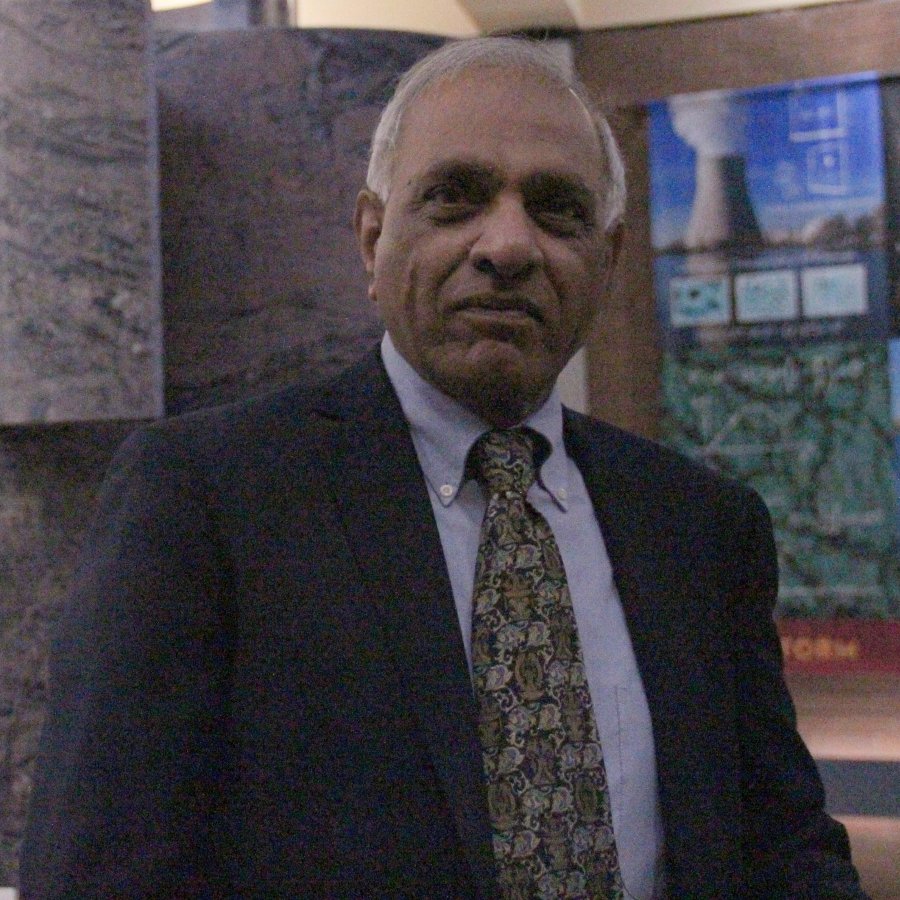
Junuthula N. Reddy
Mechanical Engineering, Texas A&M
ABSTRACT: In this lecture, shell finite elements based on seven-parameter and twelve-parameter shell theories for large deformation analysis of composite shell structures are discussed. The seven- parameter shell element is based on a modified first-order shell theory using a seven-parameter expansion of the displacement field. The twelve-parameter shell element is developed using third-order thickness stretch kinematics. Both theories require the use of fully three- dimensional constitutive equations. The virtual work statement is integrated numerically through the shell thickness at each quadrature point of the mid-surface; hence no thin-shell approximations are imposed in the numerical implementation. The finite element coefficient matrices and force vectors are evaluated numerically using appropriate high-order Gauss- Legendre quadrature rules at the appropriate quadrature points of the element mid-surface. For laminated composite shells, a user prescribed vector field (defined at the nodes) tangent to the shell mid-surface is introduced. This discrete tangent vector allows for simple construction of the local bases associated with the principal orthotropic material directions of each lamina. As a result, one is free to employ skewed and/or arbitrarily curved elements in actual finite element simulations. Through the numerical simulation of carefully chosen benchmark problems, it is shown that the developed shell elements are insensitive to all forms of numerical locking and severe geometric distortions and predict very accurate displacement and stress fields.
Lab to Market Transition Path: Production of a Bio-Adhesive from Biomass
Friday, Feb. 1, 2019, 10:10 a.m. through Friday, Feb. 1, 2019, 11:15 a.m.
George J. Schroepfer Conference Theater, 210 Civil Engineering Building

Mahour Parast
North Carolina A & T State University (left), and
Elham H. Fini
Sustainable Engineering and Built Environment, Arizona State University (right)
ABSTRACT: Elham Fini and Mahour Parast share the technical developments and the path they followed in the commercialization of the bio-adhesive technology they invented. They discuss their research on interaction mechanisms between bio-adhesive and petroleum-based asphalt using atomistic modeling and an experimental approach. The technical research is expected to introduce a paradigm for asphalt characterization and modeling, enabling an integration of biological science, chemistry, and mechanics while revolutionizing waste management for better environmental protection.
Fini and Parast elaborate on the process of synthesis and characterization of a bio-adhesive through the support from an NSF CAREER award followed by customer discovery and market analysis via NSF I-Corps and NSF STTR projects discussing several identified markets for bio-adhesives, including asphalt and pavement application. Fini and Parast also discuss opportunities and challenges associated with product development and technology commercialization of bio-resin and bio-based construction materials.
Hydraulic Fracture Growth in Transversely Isotropic Rocks
Friday, Dec. 7, 2018, 10:10 a.m. through Friday, Dec. 7, 2018, 11:15 a.m.
George J. Schroepfer Conference Theater, 210 Civil Engineering Building
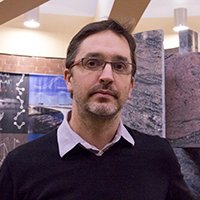
Brice Lecampion
École Polytechnique Fédérale de Lausanne (EPFL), Switzerland
ABSTRACT: Anisotropic rocks are found everywhere in nature. In particular, at metric to decametric scales, sedimentary rocks exhibit a transverse isotropy associated with beddings. Lecampion discusses the impact of such type of anisotropy on the growth of fluid-driven fractures in the case of normal and strike-slip in-situ stress regimes where the fractures grow vertically, perpendicular to the horizontal layering. Lecampion also highlights important gaps in our knowledge of fracture properties in anisotropic rock, especially how the evolution of fracture energy between the so-called divider and arrester directions impact the ultimate shape of hydraulic fractures. Typical transverse isotropy encountered in practice leads to significant horizontal elongation and, thus, is an intrinsic mechanism for height containment of hydraulic fractures in the absence of in-situ stress contrast, and a possible explanation for why stronger height containment is observed compared to the predictions of isotropic models in practice.
Taking Care of Our Roads: Pavement Maintenance and Rehabilitation
Friday, Nov. 30, 2018, 10:10 a.m. through Friday, Nov. 30, 2018, 11:15 a.m.
George J. Schroepfer Conference Theater, 210 Civil Engineering Building

Andrew F. Braham
Civil Engineering, University of Arkansas
ABSTRACT: The 2017 ASCE Infrastructure Report Card gave the four million miles of roads in the United States a “D” grade. The fact that 21% of highway pavement is in poor condition is a large influence on this low grade. One of the recommendations that ASCE provided to raise the grade was to “prioritize maintenance and the state of good repair to maximize the lifespan of roads.” How can we do this? By applying the right treatment to the right road at the right time, we can increase the lifespan of our roads and reduce the long-term cost. After moving through the concept of pavement preservation and perpetual pavement, Braham provides a brief overview of the different types of pavement maintenance and rehabilitation. Braham then explores preliminary findings from research on Cold In-Place Recycling (CIR, a type of pavement rehabilitation) to show how much there is to learn about all types of pavement maintenance and rehabilitation.
Microbial Resource Management in New Buildings: Microbial Ecology Influenced by Consumer Choices and Engineering Decisions
Friday, Nov. 16, 2018, 10:10 a.m. through Friday, Nov. 16, 2018, 11:15 a.m.
George J. Schroepfer Conference Theater, 210 Civil Engineering Building
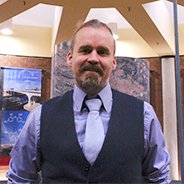
Frederik Hammes
EAWAG (The Swiss Federal Institute of Aquatic Science and Technology), Switzerland
ABSTRACT: Bacteria lives in our plumbing systems. The composition and the quantity of these bacterial communities have potential long-term impacts on the consumers. Building plumbing systems are not regularly monitored from a microbial perspective, but plumbing systems are controllable environments. Choices made when building impact microbial growth, for instance selecting copper pipes vs. plastic pipes, the number of bathrooms, or the warm water temperature settings. These choices affect initial biofilm formation and development, and the establishment of the microbiome. We have the opportunity to manage and control drinking water communities by understanding and exploiting microbial ecology. Hammes explores factors contributing to biofilm development in plumbing systems and how to manage drinking water microbial communities.